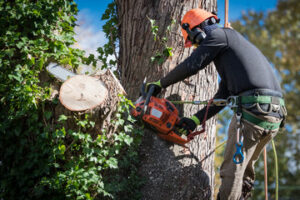Brigantine Roofing is an essential part of a building, protecting the structure from rain, snow, sunlight, and extreme temperatures. It also provides insulation and enhances a home’s aesthetics.

There are many different types of roofs and materials used to cover them. Learn the basics of roofing to understand the process and how it works.
The roof structure is the construction at the top of a building that usually provides protection from the elements. It can also form an aesthetic feature of the building. It comprises a range of different types of structures including trusses, space frames, barrel vaults and braced domes. It can also include elements of traditional masonry such as tie beams, wall plates and rafters.
The structural timber parts of a roof are known as the roof frame and they can be constructed either on site using rafters or prefabricated from plywood or oriented strand board and craned into place. The roof frame is then covered with sheathing. The sheathing is usually made from plywood or oriented strand board but can be any material. In older buildings it may be thatch, straw or split bamboo.
A ridge is the line that divides two planes of a pitched roof and is at its highest point at the peak. The ridge is a load bearing part of the roof structure that is usually covered with ridge tiles. They help to keep rain and snow off the roof.
A collar beam is a timber part of the roof that sits at a lower level than the ridge and supports the rafters. It can also support a ridge vent or a skylight and is sometimes called a eave strut. A strut is another load bearing part of a truss, but it extends outwards rather than inwards. It is commonly found on a scissor truss, but can be used in other types of trusses as well.
In a gable roof, a dormer is a part of the roof that projects outwards from a wall, such as a bay window. A gable roof has four walls with sloped sides, but a dormer only has two sides.
Roof joists, sometimes called joists, are the main framing parts of a roof. They are positioned along the rafters and are joined to them with girders, which are long timbers that form the main part of the frame of the roof. The joists are also supported by purlins, which are horizontal timbers that span the trusses and are used to hold sheathing materials. The joists and purlins are joined to each other by cleats, which are hidden metal brackets.
Roofing Materials
Choosing the right roofing materials is one of the most important decisions that a building owner will make. The material will affect how the roof looks, its longevity, and how it performs in extreme weather conditions. In addition, the material will affect how much a building costs to maintain over time.
Throughout history, people have used many different materials to construct their roofs. Originally, roofs were constructed from simple thatch and branches, which provided basic protection from the elements. Later, as the need for stronger and longer-lasting materials developed, a number of different roofing options were created.
Some of the most durable roofing materials are slate, metal, and wood. These roofing materials are able to withstand high winds and heavy rains. They also help to reduce the amount of heat that a building absorbs. This can make a home more comfortable for residents and increase its resale value.
Other roofing materials include membranes and shingles. These are easy to install and come in a variety of colors. They are a good option for flat or low-sloped roofs, but they do not provide as much insulation as other roofing materials.
Rolled roofing is another common type of roofing. It comes in rolls that can be easily unrolled onto a roof and nailed into place. This is a good choice for a flat or low-sloped roof and is inexpensive, but it does not offer as much insulation as other roofing materials.
Another roofing option is concrete. It is composed of a mix of concrete and fibers or other reinforcements. The concrete can be reinforced with steel bars or rebar, galvanized metal strips, or other types of reinforcement. Concrete roofs can be designed to have a smooth surface or they can be made to resemble slate or stone.
Other types of roofing materials include synthetic or composite shingles and clay tiles. These are usually made of lightweight content, and some even contain recycled materials. These materials are a good option for those concerned with green living. They can be manufactured to mimic the look of more expensive roofing materials, like slate and cedar shakes, without their higher price tags or maintenance requirements.
Roofing Repairs
When a roof suffers damage or wear, it’s important to take action to protect the interior of a building and other structures below. There are two main approaches: re-roofing and roof replacement.
Re-roofing involves applying a new layer of shingles or another roofing material on top of an existing layer. This is typically a cheaper and faster option than replacing the entire roof. It also offers the added benefit of giving a building a fresh appearance from the street.
However, re-roofing only covers up the damaged areas and won’t last as long as a complete roof replacement. In addition, it can void the warranty on the new shingles or roofing materials. And, without removing the old shingles, it’s impossible to know if there are other serious issues with the structure or decking underneath.
A roof is made up of many different parts and pieces, including flashing. This is the metal that’s often hand-bent to create a specific application. Flashing is often interleaved between courses of shingles or fixed to the roof with a combination of nails and sealant. To repair a problem with flashing, it’s usually necessary to remove the damaged piece and then carefully cut and bend a new piece of flashing to fit the application. The new flashing can then be nailed in place and covered with a suitable layer of sealant.
Another type of roofing repair that is common for homes and commercial buildings is fascia board replacement. The fascia is the long wooden board that protects the lower edges of the roof. It’s commonly exposed to a lot of damage, including water leaks, animal infestation, mold growth, and cracking or splitting. It’s important to replace a damaged fascia board with the right material, and it’s best done by professional roofers, like the experts at No. 1 Home Roofing!
Roofing Maintenance
A building’s roof is its primary barrier to the elements. It protects the interior from rain, snow, wind, and sunlight. It also provides insulation and enhances the appearance of a structure. To ensure a roof remains watertight and weatherproof, proper maintenance is essential.
Roofing maintenance is usually done by professional roofers who can assess and fix any issues. However, some maintenance tasks can be completed by homeowners or building occupants. The frequency of roofing maintenance depends on the environment in which the building is located. The type of roofing material, the amount of sun exposure, and the level of rainfall are all factors in determining how often a rooftop should be inspected.
Surface maintenance tasks include removing debris and inspecting the roof’s integrity. During these visits, roofers check for cracks or leaks and replace any damaged pieces. They also look for areas where air might be escaping or entering the building to keep temperatures in check. They may also remove ice that has formed on the rooftop and repair any damage caused by this ice.
More in-depth maintenance involves checking the underlayment, membrane, and flashing. The underlayment is a waterproof layer that seals the plywood sheathing and keeps moisture out. The membrane and vapor barrier are then placed on top to protect the structural components and insulation. Finally, the flashing is installed at the joints to prevent water intrusion.
These are the points where the roof meets any penetrations like chimneys, pipes, vents, skylights, and exhaust fans. Roofers will also inspect the roof hatch and make sure there is no loose hardware or deteriorating surfaces. They will also examine the condition of the flashing around these penetrations to ensure it is tightly sealed and watertight.
Another part of the maintenance process is cleaning the gutters to ensure they are directing water away from the building and not down the roof membranes or elements. Inspecting the down spouts for clogs, breaks, and other problems is also an important task during a roof maintenance visit.
Safety is a major concern when working on the roof. Almost every industrialized country has set specific safety regulations for work on the roof. These include personal fall arrest systems, safety nets, and training requirements. These safety measures can help prevent serious injuries or even death in the event of a fall from the roof.








